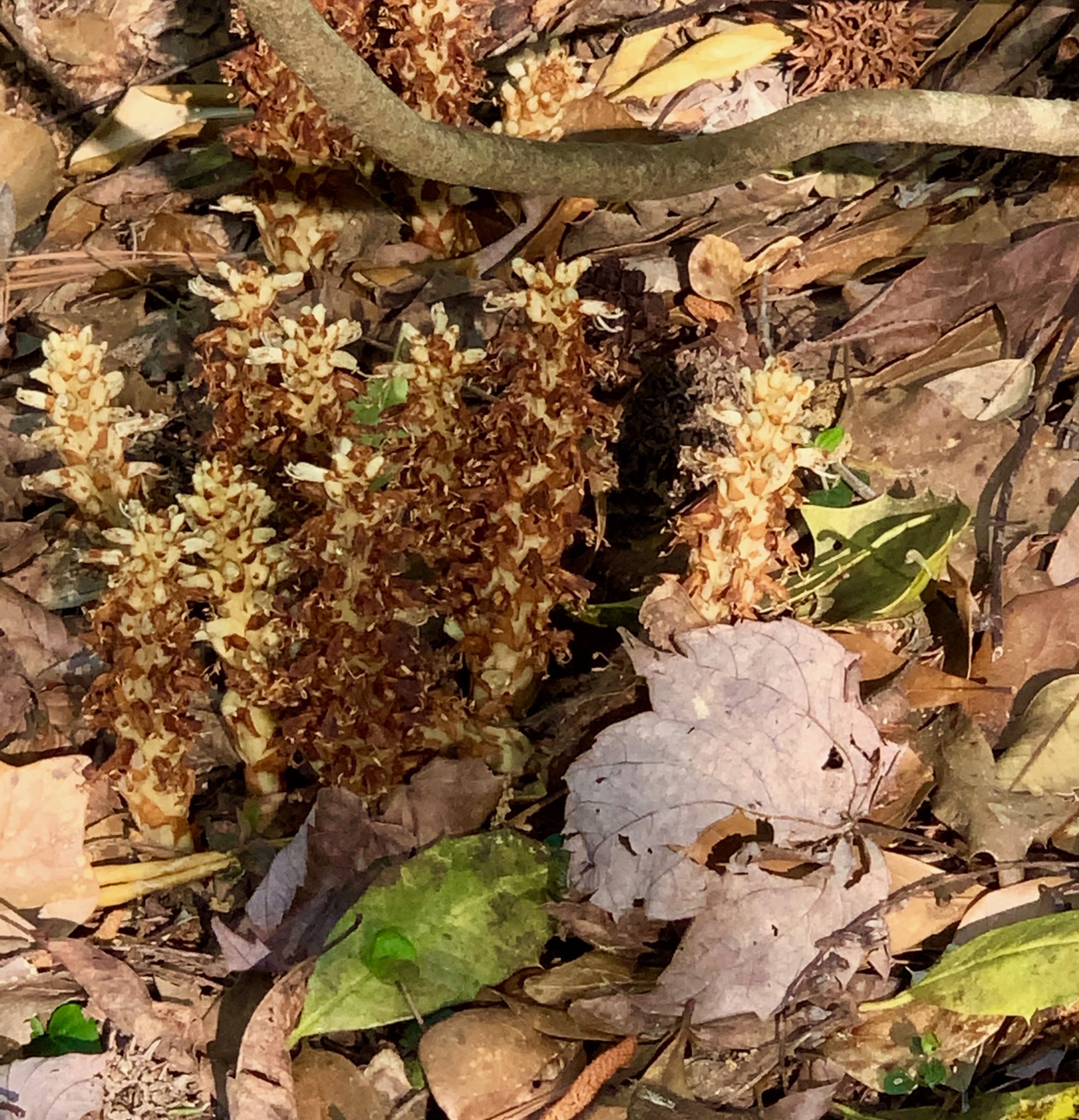by Mary Reid Barrow
Friend or Foe?
Dead or alive?
Interesting looking or just plain ugly?
Squawroot is one big question mark.
Every year about this time in spring, this unusual plant pops through the ground and leaf litter in woody areas, like First Landing State Park.
Squawroot is picky about its habitat and grows mainly under some oak tree species. It doesn’t stand out immediately against its woodsy back ground. But once your eyes pick it out, it is easily visible along the trails where oaks grow in First Landing:

Brownish-yellow, and scaly, squaw root reminds me of a malnourished pinecone. It spends the first few years of its life growing in the dark underground where it doesn’t work hard for a living because, living the life of Riley, it takes all its nourishment from oak tree roots.
When an adult squaw root finally emerges from the ground this time of year, it may grow to around 6 inches or more. It begins to slowly bloom as summer comes on with tiny creamy colored flowers between the scales. In the fall the flowers produce a seed pod that drops to the ground where the seeds grow straight down to the roots of a host tree and hang on for dear life.
Squaw root never gets a green leaf because it produces no chlorophyll. The pine-cone like scales are as close to a leaf that this plant will ever get.
Sometimes squaw root is called cancer root, probably because its own roots cause a knob to grow on the tree root where it joins. It’s also called bear cone in some parts of the country because bears find squaw root a tasty treat in spring.
Squaw root gets its most often used common name from the fact that Native American women used it to treat female medical issues from childbirth to menopause.
Its Latin name is Conopholis Americana. Conopholis comes from the Greek for cone and scales, because of its resemblance to a pine cone.
As far as botanists can tell, squaw root doesn’t harm trees. It just lives off them.
Looks like squaw root is just one more thing in nature, whether plant, animal or human, that depends on trees to exist, yet, as always, the trees ask nothing in return.
Do you have a favorite tree, a secret tree grove or neighborhood climbing tree that you love? Let me know your stories about trees, the critters who live in them and the insects that dine on them. Send an email to maryreid@lrnow.org. You also can sign up below to get notified when my blog comes out.